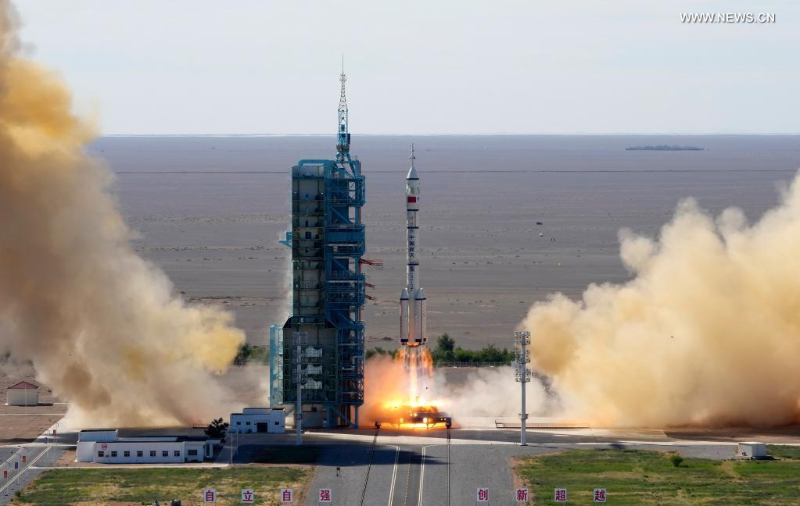China Launches First Crewed Mission for Space Station Construction
JIUQUAN, June 17 (Xinhua) — China on Thursday successfully launched the crewed spacecraft Shenzhou-12, which is expected to send three astronauts to its space station core module Tianhe for a three-month mission.

It is China’s seventh crewed mission to space and the first during the construction of China’s space station. It is also the first in nearly five years after the country’s last manned mission.
The spacecraft, atop a Long March-2F carrier rocket, was launched from the Jiuquan Satellite Launch Center in northwest China’s Gobi Desert at 9:22 a.m. (Beijing Time), according to the China Manned Space Agency (CMSA).
The three astronauts are commander Nie Haisheng, a 56-year-old veteran who participated in the Shenzhou-6 and Shenzhou-10 missions, Liu Boming, 54, who was part of the Shenzhou-7 mission, and Tang Hongbo, 45, who is in his first space mission.
The three astronauts are expected to set a new record for China’s manned space mission duration, exceeding the 33 days kept by the Shenzhou-11 crew in 2016.
The Shenzhou-12 spaceship will conduct a fast autonomous rendezvous and docking with the in-orbit space station core module Tianhe, forming a complex with Tianhe and the cargo craft Tianzhou-2. The astronauts will be stationed in the core module.
Their work will be more complicated and challenging than previous crewed missions, according to CMSA director Hao Chun.
The Shenzhou-12 crew will complete four major tasks in orbit, said Ji Qiming, assistant to the CMSA director, at a press conference held at launch center on Wednesday.
First, they will operate and manage the complex, including the in-orbit test of the Tianhe module, verification of the recycling and life support system, testing and operation training of the robotic arm, as well as management of materials and waste.
Second, they will move, assemble and test extravehicular spacesuits and perform two extravehicular activities for work including assembling an extravehicular toolbox, lifting the panoramic camera and installing extended pump sets.
Third, they will carry out space science experiments and technology experiments, as well as public outreach activities.
Fourth, they will manage their own health through daily life care, physical exercise, and regular monitoring and assessment of their own health status.
China launched its space station core module Tianhe on April 29 and cargo craft Tianzhou-2 on May 29. The two completed a computer-orchestrated rendezvous and docking on May 30, waiting for the first crewed mission to unpack the cargo.
According to the China Academy of Space Technology (CAST), more than 160 large and small packages, including supplies for astronauts and space-science equipment, were delivered by Tianzhou-2 in late May.
The Tianzhou-3 cargo craft and the Shenzhou-13 manned spaceship will also be launched later this year to dock with Tianhe, and another three astronauts will then begin their six-month stay in orbit, according to the CMSA.
After the five launch missions this year, China plans to have six more missions, including the launch of the Wentian and Mengtian lab modules, two cargo spacecraft and two crewed spaceships, in 2022 to complete the construction of the space station.
http://www.wuhu.gov.cn/English/News/30836651.html
